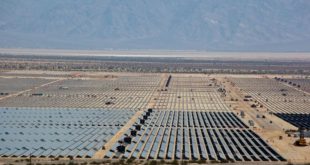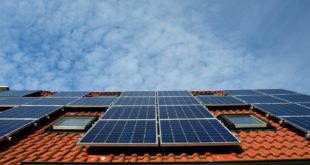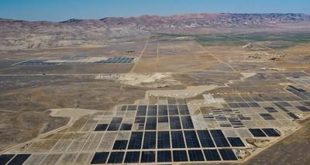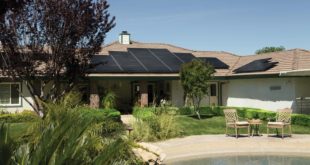We can save land and water by building floating solar panels
Singapore, a country half the size of Los Angeles, is home to 5.4 million people. This makes the island city-state one of the most densely populated countries in the world, with roughly 7,500 people packed into each square kilometre. When almost your entire population lives in a high-rise, there’s not a lot of free roof space for rooftop solar panels. One thing which Singapore does have in abundance, however, is water.
To generate clean energy where land is scarce, Singapore is building what will be the world’s largest floating solar panel system. When finished, it will generate 3.3 gigawatt-hours of solar energy each year. If this proves effective, they’ll extend the project to 4 gigawatt-hours. By placing solar panels on reservoirs and other underutilised bodies of water we can free up land for agriculture or conservation. A surprising benefit to floating solar panel systems is that the proximity to water keeps the solar panels cool and operating at an optimal temperature.
Other island nations are also experimenting with floating solar, including Japan and Britain. Japan is a largely mountainous island and as only 12% of its land is suitable for farming space is a precious commodity. But Japan’s rice paddies are fed by enormous reservoirs, meaning that the conditions are excellent for floating solar panels. Floating solar panels already power 920 homes, and a larger system is due to start powering 5,000 homes in March 2016. In Britain, a utilities company is attempting to reduce their operating costs by constructing Europe’s largest floating solar panel system. The company have forecasted a 9% return on their investment.
Floating solar panels not only save land, but also saving water. Hot, dry parts of India and the United States often face serious water shortages, a problem exacerbated by due evapouration. To combat this problem, researchers have developed an interlocking floating solar panel system that stems evaporation by covering the water’s surface. India has already developed solar panel systems that straddle canals, and now plans to build floating solar panel systems on larger bodies of water.
Solar panels do pose some interesting design challenges. For a start, they obviously have to be waterproof. If they are going to be located on a reservoir, then it also needs to be ensured that nothing leaches from the solar panels into the water. The solar panels have to be accessible for cleaning and maintenance via floating walkways. The undulation of water influences the direction that the solar panels are facing, which interferes with energy generation. To prevent undulation that would interfere with the generation of energy, floating solar panels have to be anchored tightly — either to the land next to the water, or under the water itself.
There are concerns too, about the impact that floating solar panels would have on wildlife in the water. Shading from the solar panels will reduce the amount of algal blooms, which could either be a blessing or a curse depending on the specific local situation. Excessive algae kills water life, but a low level of algae is a useful source of food. Most floating solar panels seem to be destined for man made reservoirs or other locations that will have little ecological drawback, such as wastewater ponds.
In their current form, floating solar panels represent an exciting development, albeit one that is to be used in certain niche situations. That could change however, if we can figure out how to deploy floating solar panels in the ocean. This entails a much bigger set of challenges, especially due to the threat of waves, storms and saltwater, but if cracked they could perhaps bring much greater rewards in the future.
About the author: Clive Rolison is a renewable energy installer based in Essex, South East England. He writes about sustainability and green technology on his website.
 Alternative Energy HQ solar power for homes, wind energy, and bio fuel issues
Alternative Energy HQ solar power for homes, wind energy, and bio fuel issues









